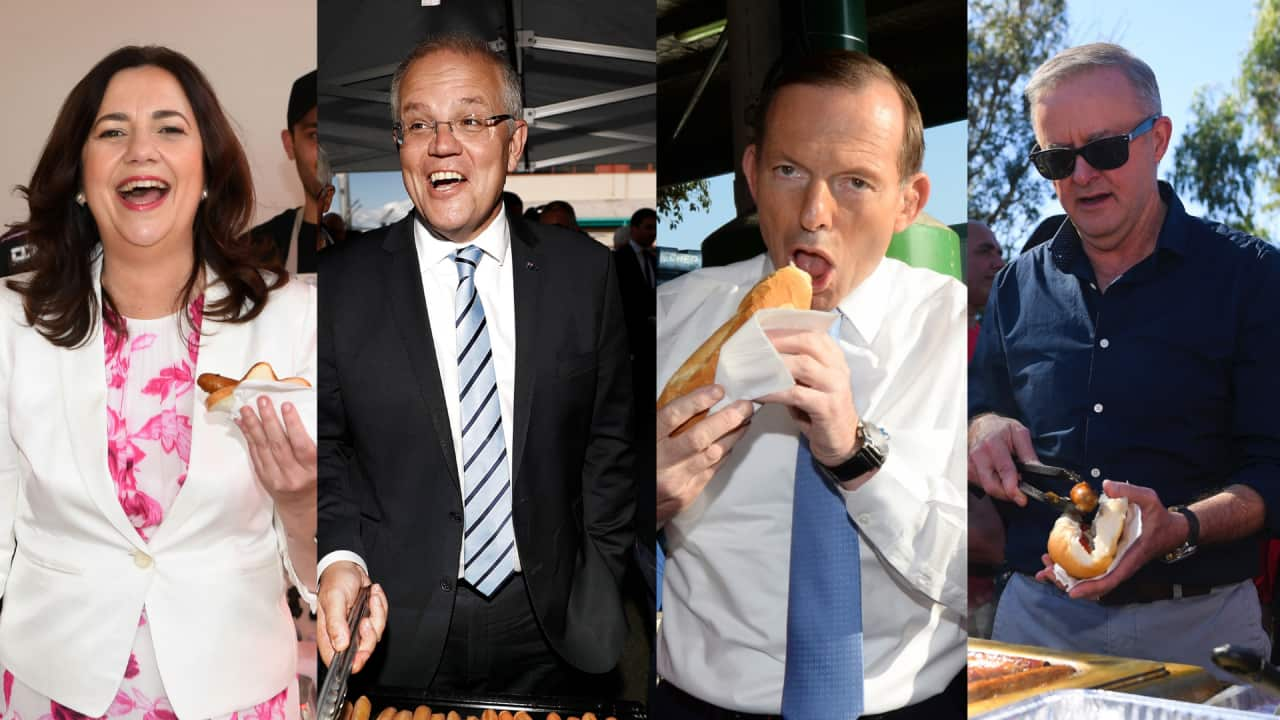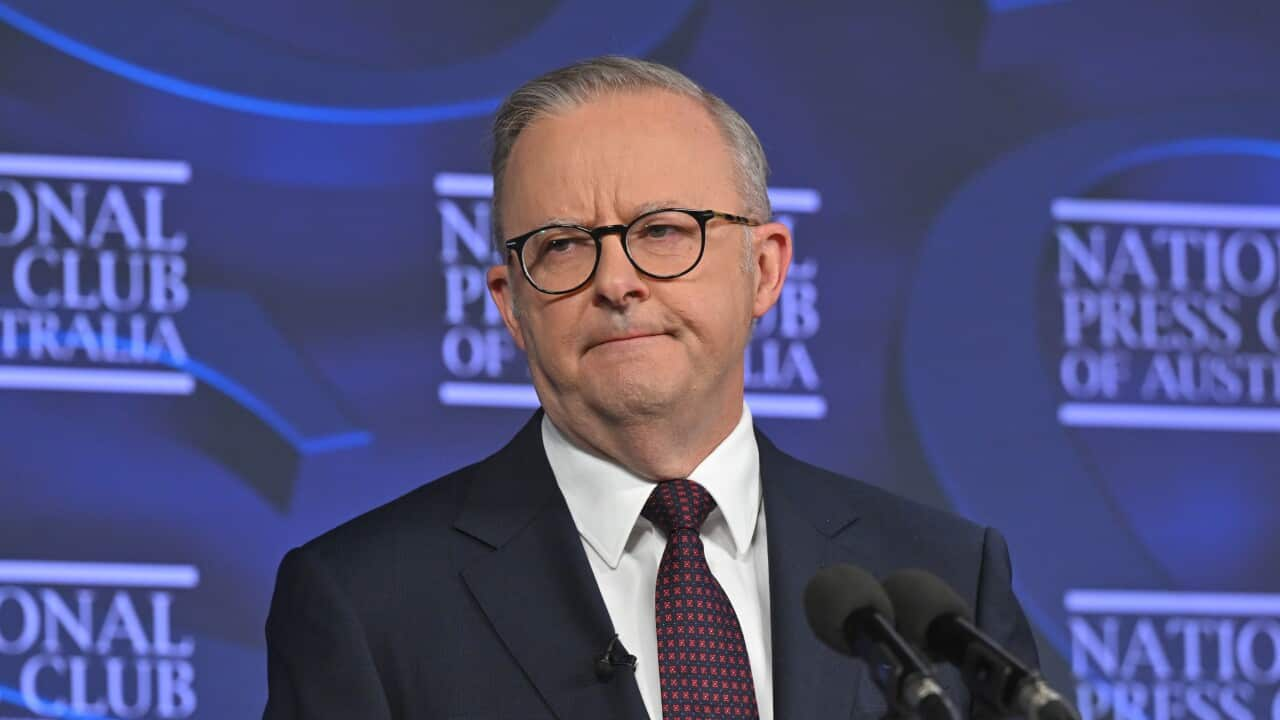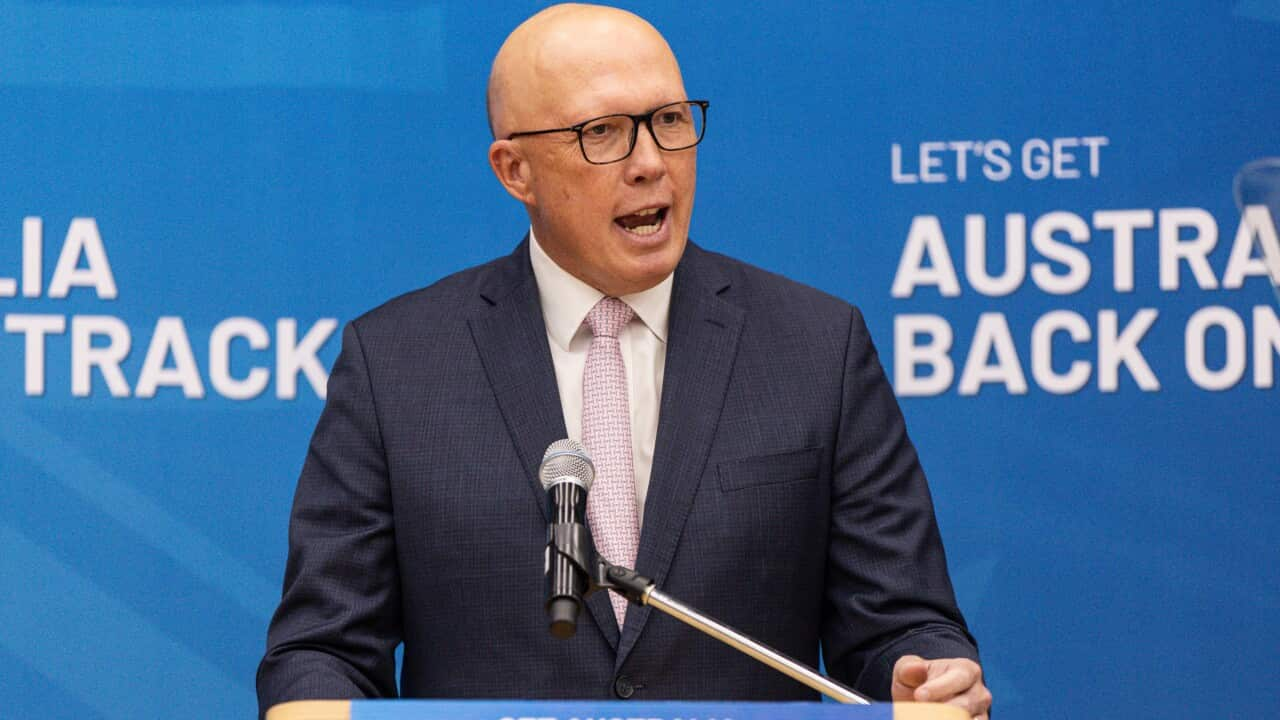Every three years, the Australian prime minister will call a federal election.
Because there are no fixed terms or election dates, predicting when an election will be can turn into a guessing game.
That means that generally, the prime minister will call an election at a time that's politically advantageous for them.
Elections are held on Saturdays, and candidates need to be given at least 33 days' notice of the poll which, this time, will be held on 3 May.
Here's how an election is called and what happens afterwards.
How is a federal election called?
When the prime minister decides to call an election, a few steps need to happen.
First, the prime minister needs to tell the representative of the King, the governor-general, that they wish to call an election.
Then, the governor-general terminates the sitting parliament and dissolves the House of Representatives.
After, the governor-general instructs the independent electoral body, the Australian Electoral Commission (AEC), to conduct an election, which includes setting dates for nominations, electoral rolls, and of course, election day.
Then, the writs are issued.
LISTEN TO

When can we expect an election?
SBS News
04:54
Wait, what does it mean when writs are issued?
Within 10 days of the dissolution of the House of Representatives, the writs are issued.
A writ is a legal document that authorises an election to choose a new parliament to be held.
The writ specifies the date when candidate nominations should be lodged, the date the electoral rolls will close, the date of the election and the date for the return of the writ.
Once the writs are issued, you'll only have one week to make sure you're eligible to vote. This usually means people who have turned 18 since the last election will need to enrol to vote, though you'll also need to update your details if you've moved houses since then.
The nomination deadline is between 10 and 37 days after the writs are issued. Here, parties will conduct their preselection processes and choose their candidates, though this is often decided before the election is even called.
What happens during the campaign period?
When the election is called and the writs are signed, the election officially begins and politicians start to campaign.
During this time, you'll see a lot more advertisements on TV, the internet, in newspapers and in your mailboxes — often showing lots of handshakes or babies being kissed.
In Australia, advertising campaigns are regulated with rules for what you can say.
Each official election advertisement needs to be authorised by the party or individual, which is why at the end of party advertisements, you'll hear someone quickly say who authorised the ad and the name and address of the party. If it's an individual candidate they must give their name and the town or city where they live. Without this information, parties and candidates can be fined or even jailed.
The campaigning continues until three days before people hit the polls, when a media blackout begins. During this period, it's against the law for candidates to politically advertise on television or radio, with the aim being that voters make up their minds by themselves.
However, this ban doesn't extend to print or the internet, so you might still see some ads while you scroll through Instagram.
What happens on election day in Australia?
Aside from treating yourself to an old-fashioned 'democracy sausage', election day in Australia is a well-oiled machine.
It will be on a Saturday to give everyone the best chance of voting. But if you can't make it into a polling booth then, you can vote by mail or visit a pre-polling booth earlier.
Polling booths are usually at schools due to their handy location and because there's usually at least one in each community. But they can also be at churches or other public buildings.
Outside the voting area, candidates and their supporters will hand out leaflets for how to vote for them and their ideal preferences. But they can't enter the voting area or tell you how to vote — that's your choice!
When you enter the voting hall, you'll see an AEC representative at a table who will mark your attendance. Then you'll be directed to one of the polling booths to complete your ballot papers, with one being for the House of Representatives and the other for the Senate.
Polling booths open at 8am and close at 6pm.
After this, the count begins.
When will we know the winner of the federal election?
At 6pm, the votes are in and counting starts.
AEC officials at each polling place count the votes. The process is also watched by scrutineers from each party or candidate to ensure the process is fair.
Once the votes are counted at the location, the results are phoned through to an AEC official, the Divisional Returning Officer, who puts them into a special software. These results are then released via the AEC.
Across the country on televisions and at viewing parties, voting results roll through. Usually, the result is known by mid-evening, but sometimes it can take weeks for the result to finally be declared.
How will a new government be formed?
During a federal election, you're casting a vote for a person within your specific government area, or electorate. Members of the House of Representatives are elected using the preferential voting system. The individuals who win each electorate (by securing more than 50 per cent of formal votes) go on to form the House of Representatives.
The political party that forms government is the one that has won the majority of seats in the House of Representatives.
As there are 150 seats, the winning party must gain 76 seats.
If a party doesn't win 76 seats, it can still form government with the support of other parties or independents. This is known as a minority government. The last minority government in Australia was in 2010, when the Labor Party, led by Julia Gillard, formed government with the support of the Greens and some independents.
The prime minister is chosen by a vote of the members of the political party that has successfully formed government at an election, rather than votes for the figure themselves.
The Senate is made up of 76 senators — 12 from each state and two from each territory.
Each candidate needs to gain a certain number of votes before they're elected to represent their state or territory.
A government doesn't need to have a majority in the Senate in order to govern.





